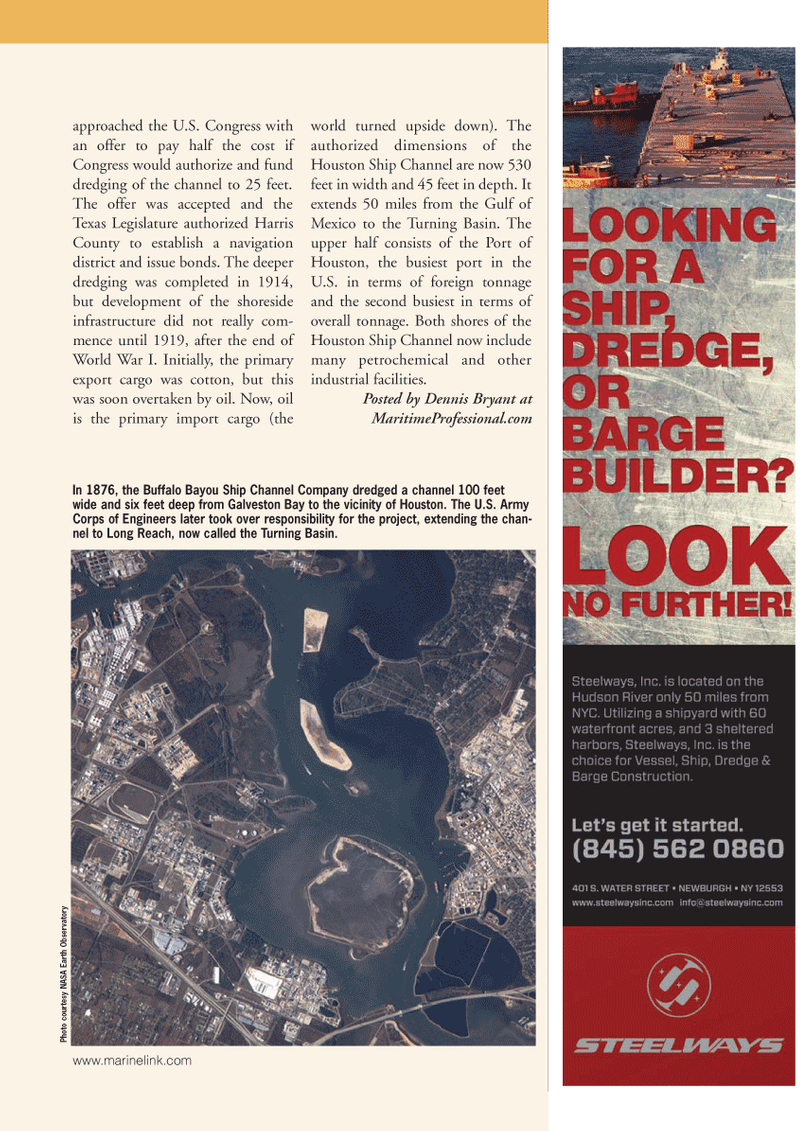
Page 25: of Marine News Magazine (April 2011)
Offshore Energy Edition
Read this page in Pdf, Flash or Html5 edition of April 2011 Marine News Magazine
www.marinelink.com approached the U.S. Congress with an offer to pay half the cost if
Congress would authorize and fund dredging of the channel to 25 feet.
The offer was accepted and the
Texas Legislature authorized Harris
County to establish a navigation district and issue bonds. The deeper dredging was completed in 1914, but development of the shoreside infrastructure did not really com- mence until 1919, after the end of
World War I. Initially, the primary export cargo was cotton, but this was soon overtaken by oil. Now, oil is the primary import cargo (the world turned upside down). The authorized dimensions of the
Houston Ship Channel are now 530 feet in width and 45 feet in depth. It extends 50 miles from the Gulf of
Mexico to the Turning Basin. The upper half consists of the Port of
Houston, the busiest port in the
U.S. in terms of foreign tonnage and the second busiest in terms of overall tonnage. Both shores of the
Houston Ship Channel now include many petrochemical and other industrial facilities.
Posted by Dennis Bryant at
MaritimeProfessional.com
Photo cour tesy NASA Ear th Obser vatory
In 1876, the Buffalo Bayou Ship Channel Company dredged a channel 100 feet wide and six feet deep from Galveston Bay to the vicinity of Houston. The U.S. Army
Corps of Engineers later took over responsibility for the project, extending the chan- nel to Long Reach, now called the Turning Basin.

 24
24

 26
26
